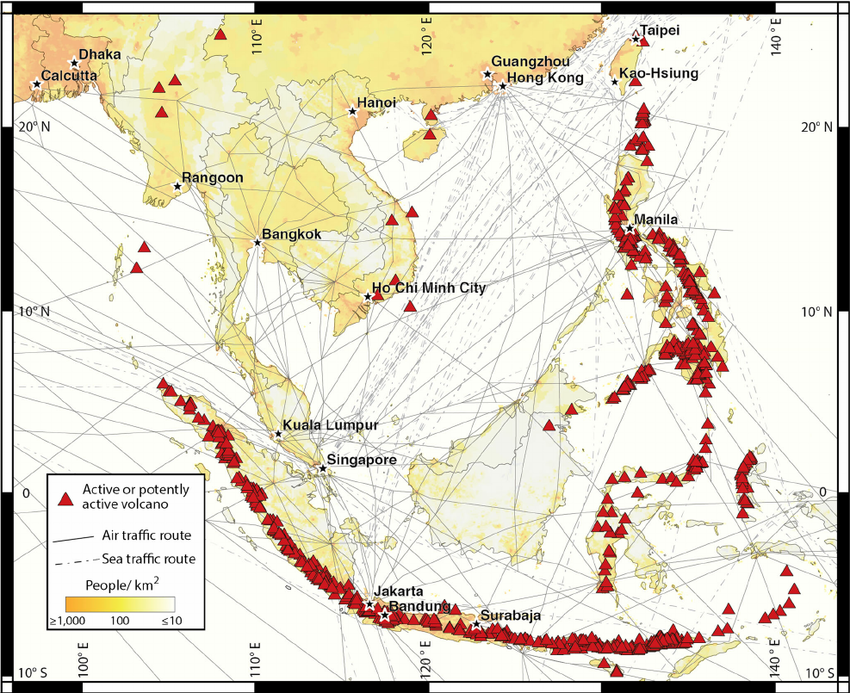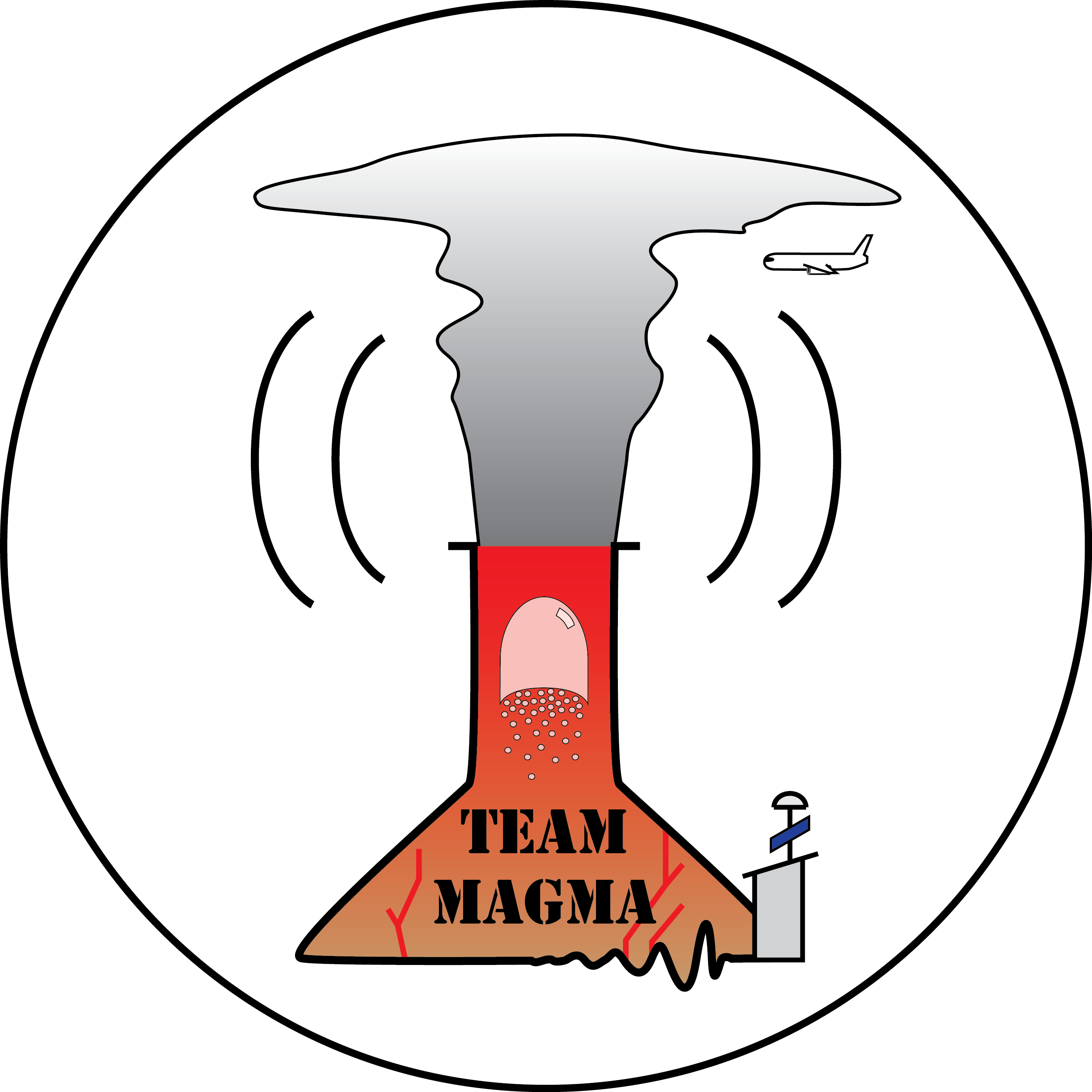PROJECTS
Team magma tackles a variety of challenges! Below is a list of our current research work.
This project is a collaboration between CAAS (Civil Aviation Authority of Singapore), MSS (Meteorological Service Singapore), and EOS (Earth Observatory of Singapore). This project aims to determine the probability of ash impacting Singaporean, and ASEA airspace within the next ten years and combines plume modeling, and eruption probabilities for defined volcanic zones. This is an externally funded project.

The aim of this project is to investigate the relationship between surface ground deformation and processes occurring in the volcanic conduit. To acchieve this goal we run analogue experiment in our fantastic TEAM MAGMA lab, where we use gelatin as crust analogue. In addition, we also run and numerical simulation.The final scope of is to have a better understanding on what are the key parameters that control the system.

Common physical models, such as the Mogi or Okada models allow us to describe how surface deformation is distriubted depending on the geometry of an underground source (magma chambers/ dikes/ sills) and the amount of inflation or deflation that source undergoes. We use analogue model to verify the accuracy of these models and therefore understand the uncertainties associated to them.

Dikes open up against the direction that is easiest, which we call the least compressive stress. This stress can vary in orientation depending on heterogeneities in the crust. Using analogue experiments, we investigate how a pressurized magma chamber can alter the orientation of a propagating dike.

Eruption onset estimation via a seismic data

Infrasound is generated from an eruption when the magma explosively leaves the vent pushing on the atmosphere and generating pressure waves. These waves can be detected at large distances on the 10s to 100s to 1000s of km range depending on the size of the eruption. The project aims to combine local infrasound techniques for determining source parameters like time and size of eruption, with longer range propagation research to develop a tool for regional volcano monitoring. The aim of this project is to be able to issue alerts with information that can be used in plume modeling to relevant agencies for timely hazard alerts for the aviation industry.

Magma migration flagged automatically via seismic amplitude data

Muon tomography at Mayon volcano


